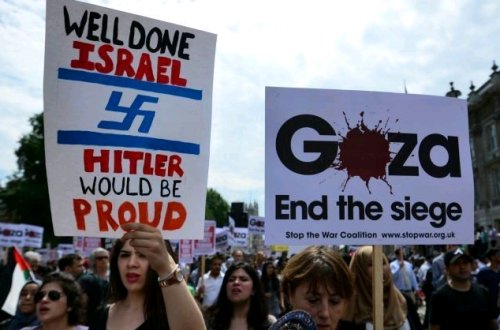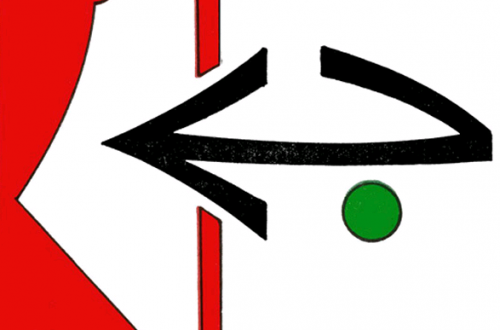This is a guest post by Raziq
Juhayman al-Otaibi was a jihadist born and raised in Saudi Arabia. He and his followers occupied the Grand Mosque of Mecca in the final months of 1979. After a bloody siege that lasted 3 weeks, he was eventually defeated and later executed along with 67 of his followers. This was the first major attempt by militant Islamists to take power and Juhayman’s legacy was not easily quashed. His message would continue to inspire future militants, including Osama bin Laden.
In this article I will be looking at the background of Juhayman and the events leading up to the siege of Mecca.
Saudi Arabia had been a backwater for many centuries, with the main source of income coming from pilgrims who visited every year during the Hajj season. After the discovery of vast reserves of oil in the 1930s, Saudi Arabia was suddenly thrust into the global limelight and had unimaginable wealth. This led to the country embarking on extensive building programs. The Saudis were careful to balance conservative traditions with this process of modernisation.
Juhayman was born in 1936 in a small Bedouin village called Quseim in the area of Najd. At the age of 19 he joined the Saudi Arabian National Guard. He also attended talks given by Wahabi clerics, most notably the Wahabi cleric Shaykh Bin Baz. He stayed with the National Guard until 1955 and then left to study at the University of Medina. Juhayman was reported as having a magnetic personality by his University teachers. At university he attracted a personal following composed mostly of local Saudis with a mixture of foreign students.
In the 1950s, the Muslim Brotherhood (MB), an Islamist party, was outlawed by President Gamal Abdel Nasser in Egypt after a failed assassination attempt on his life. Many members of MB were persecuted and imprisoned. Nasser had angered the MB by calling for pan-Arabism, rather than their hoped for Islamist state. Nasser wanted all Arab states to unite into one empire with him as the head. He had some short lived success with the creation of the United Arab Republic (1958-61).
The Saudis opposed Pan Arabism because it would make Egypt the focal point of any future state. The Saudi King Faisal denounced such unity and instead spoke in favour of pan-Islam, with Saudi as the focal point. When Nasser started imprisoning members of MB, many of them fled to Saudi Arabia and King Faisal was happy to accept opponents of Nasser’s regime. He also ensured they were given top jobs to spread pan-Islam. One of the most notable Egyptians to move to Saudi Arabia was Muhammad Qutb, brother of Syed Qutb. Muhammad Qutb was employed as a lecturer at Jeddah University and would later go on to become one of Osama bin Laden’s teachers.
Juhayman also met members of MB during his studies at Medina University. They spoke about Nasser having abandoned the path of God by not strictly ruling by their version of Islam. Hence this had made him an apostate who deserved death. Juhayman was directly inspired by these issues. In the late 60s, when King Faisal introduced television to the county there was a public outcry. Later, when female presenters were shown on the TV, the Saudi Monarchy was denounced by conservative elements for having abandoned Islam and adopting the ways of the devil. Juhayman also took the view that if Egyptians could fight against Nasser, who was not ruling by Islam, then why couldn’t Saudis fight against the Kings who were introducing corruption, in the form of television and other modernisations, to society?
In 1974 Juhayman left Medina University, along with a number of his followers, returning to his hometown in Najd. He organised a group which he called the Ikhwan (brotherhood), started preaching his take on Salafist doctrines and distributed many pamphlets denouncing the Saudi Regime.
Many of his followers were Bedouins who had moved to the big cities from their villages but eventually returned after becoming upset with the pace of modernisation which was taking place on the back of the oil boom. Juhayman started preaching about his desire to do away with the Saudi state and establish a truly Islamic (read Islamist) state. He believed that the Saudis were violating the Islamic holy places of Mecca and Medina by having control of them.
In the late 1970s Juhayman moved to Riyadh. In 1978 he started organising demonstrations against the monarchy. This drew the attention of the security services who arrested him and 100 of his followers. He was questioned in prison by Sheikh Bin Baz, his former teacher. Juhaiman complained that the Al Saud family had lost its legitimacy through corruption and imitation of the West. He was later released after Sheikh Bin baz told the authorities that he was an angry young man but harmless. After Juhayman’s release from prison he started planning his assault on Mecca.
For weeks Juhayman and his followers loitered inside and outside Mecca. They then started filling up coffins with ammunition and carrying them in to the holy precincts. Onlookers simply thought they were empty coffins being prepared for future deaths. On November 20, 1979, Juhayman and his followers moved into the Grand Mosque of Mecca and locked the gates. The Mosque was now seized by him and a well-organized group of 1,300 to 1,500 men under his leadership. He also declared his son in law to be the Mahdi, the redeemer of Islam. Thousands were still inside the Mosque when it was seized. Juhayman gave an address through the Mosque microphone, which could be heard all across the city. He made it clear that he had “liberated” Mecca and now wanted all Muslims to rise against the Saudi Kings.
The siege lasted for three weeks. Juhayman’s men had set up positions in the minarets. From the minarets they could see most of Mecca and anyone approaching the Grand Mosque. Saudi forces attempted to fight the rebels but suffered many casualties. Many of the rebels were trained marksman who had like Juhayman trained with the Saudi National guard. The Saudi forces employed many methods to break down the doors of the Mosque, including tanks, but failed in the end due to the doors’ strength. The Minister of Defense, Prince Sultan, finally called the Pakistani Army to handle the situation. General Zia-ul-Haq, who had recently become unpopular in Pakistan for having Zulfiqar Ali Bhutto executed, jumped to the chance. He hoped helping the Saudis would increase his credentials amongst the masses in Pakistan.
General Zia-ul-Haq directed the Pakistan Army to recapture the mosque, which they achieved with the help of three members of the French Special Forces. Upon entering the mosque, they discovered that it was full of dead bodies and waste. The fleeing rebels tried to escape through tunnels around the mosque, which were then flushed with water to bring the rebels out.
When Juhayman was arrested he refused to speak to anyone until a group of scholars, who had taught him in Medina, visited him in prison. His teachers embraced him and wept severely and asked him for his justification. Juhayman replied that he was motivated by the turmoil of that time and that he hoped that if they called on Allah and asked for forgiveness that perhaps Allah would forgive them. The Saudi government however was in no mood for reconciliation and Juhayman was beheaded along with 67 members of his group on the 9th January 1980.
Juhaymans group was a precursor to al-Qaida and his influence can still be seen and heard in writings and speeches of militant Islamists around the world.


